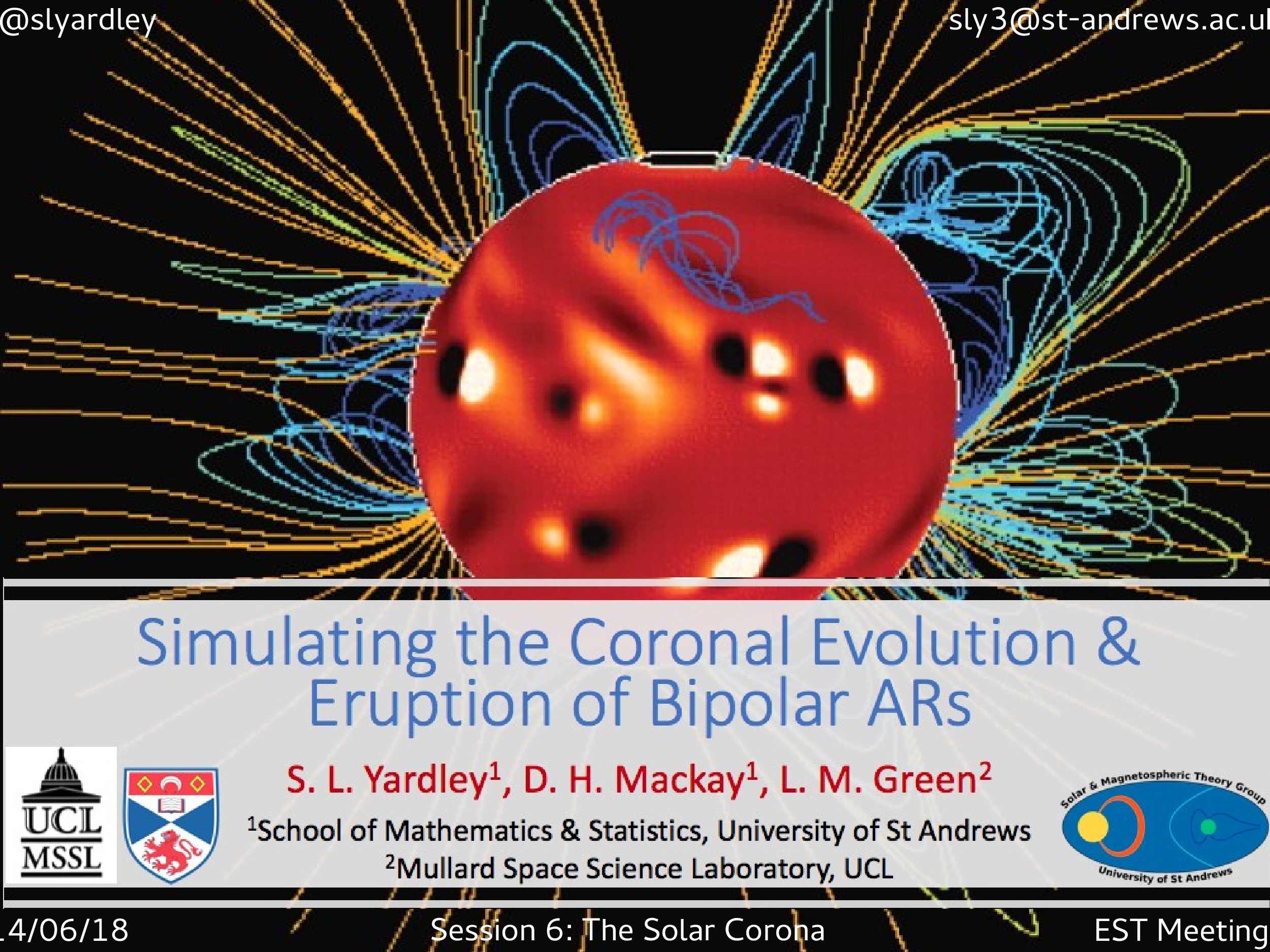Affiliation
University of St Andrews, UCL/MSSL
Main category
Natural Sciences (Physics)
Abstract
To gain a better understanding of the formation and evolution of the pre-eruptive structure of CMEs requires the direct measurement of the coronal magnetic field, which is currently very difficult. An alternative approach, such as using the photospheric magnetic field as a boundary condition to simulate a time series of the coronal field must be used to infer the pre-eruptive magnetic structure and coronal evolution prior to eruption. The evolution of the coronal magnetic field of a small sub-set of bipolar active regions is simulated by applying the magnetofrictonal relaxation technique of Mackay et al. (2011). A sequence of photospheric line-of-sight magnetograms produced by SDO/HMI are used to drive the simulation and continuously evolve the coronal magnetic field of the active regions through a series of non-linear force-free equilibria. The simulation is started during the first stages of active region emergence so that the full evolution from emergence to decay can be simulated. A comparison of the simulation results with SDO/AIA observations show that many aspects of the observed coronal evolution of the active regions can be reproduced, including the majority of eruptions associated with the regions. To better constrain these models requires the use of accurate vector magnetic field measurements with high polarimetric precision as the initial condition such as those that will be produced by EST.
Do you have problems viewing the pdf-file? Download presentation
here
If the presentation contains inappropriate content, please
report the presentation. You will be redirected to the landing page.
